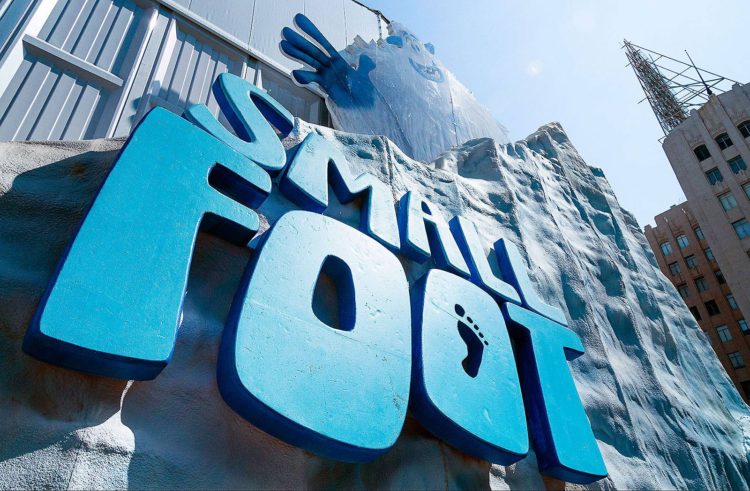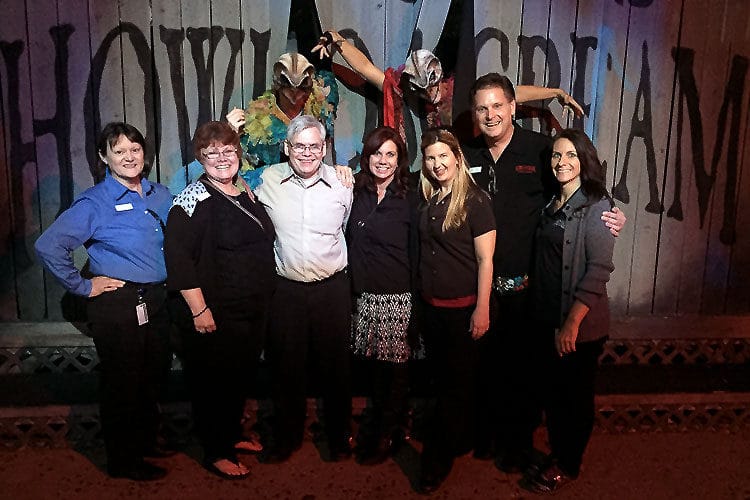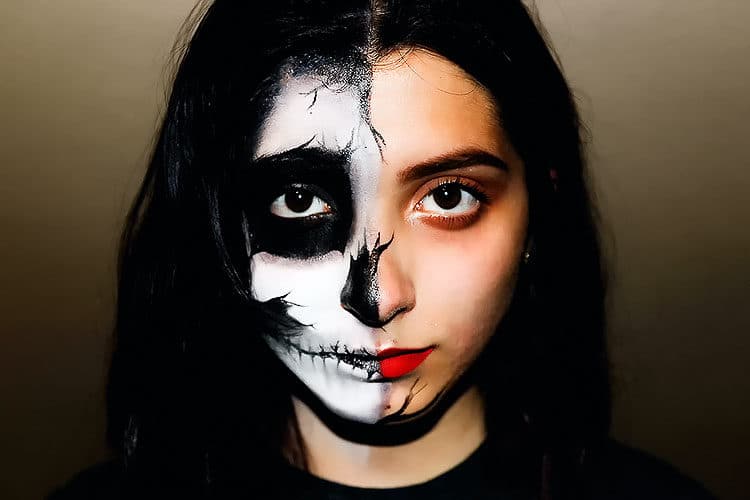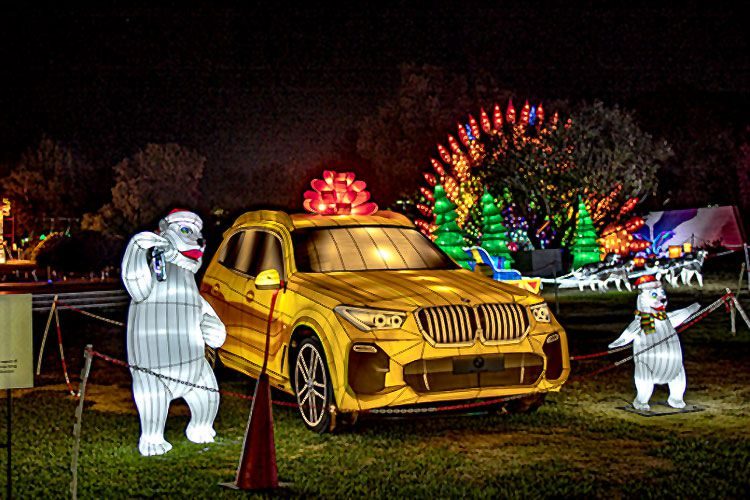As the battle for attention grows, will marketing become the driving force in Themed Entertainment?
By Philip Hernandez
The Fight For Attention
As Facebook continues to eat the world, it’s critical for a brand to own its audience’s direct attention and to stand out in a way that touches the consumer. In this digital age, data and attention are the new currencies and businesses are scrambling to hold on. Experiential marketing is fast becoming a tool that marketers use to bring attention to and promote events and products. As with TV ads, radio, billboards, print, and PPC, experiential marketing is factored into an organization’s marketing budget and treated as an expense to achieve a specific objective—such as creating exposure to and generating a buzz about an event.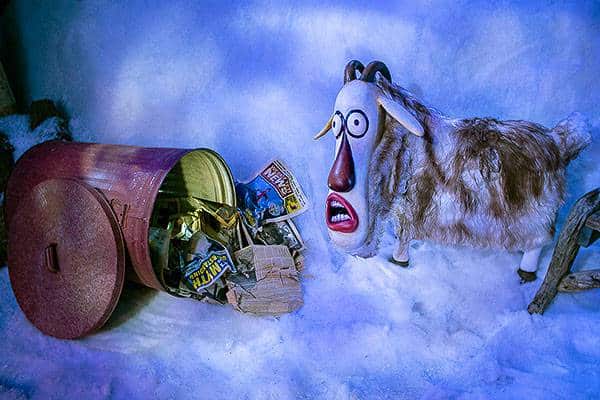
Experiential Marketing
Experiential marketing often manifests as short-lived, pop-up installations or performances, but these are evolving to become full-on immersive experiences that sometimes last weeks. As such, they’re starting to blur the line between marketing events, seasonal events, and themed entertainment. Entrance to these events is typically free to the public, and the success of an experiential marketing attraction is often determined by the number of people who attend and the amount of time they engage with the event. Seasonal events and themed entertainment, on the other hand, are responsible for making money and proving ROI, and are therefore constrained by operational funds. In this article, we discuss how the distinction between experiential marketing events, seasonal events, and themed entertainment is dissolving and what this means for the attractions industry. Experiential marketing poses some competitive issues for seasonal events and themed entertainment, because such events don’t have to meet the same cost objectives, and they often hire from the same themed entertainment sources as seasonal events. The evolution of experiential marketing represents a shift in the industry and something that all attractions need to be aware of. Jasen Smith and Kelsey McCormick are the directors of The Experiential Supply Co., which, as the name suggests, creates experiential marketing experiences—primarily for clients in the Hollywood film industry. In this article, they provide input on their experience in building a marketing event to promote a Warner Bros.’ animated film that premiered last Fall. Their journey offers insight into the similarities and differences between experiential marketing, seasonal events, and themed entertainment.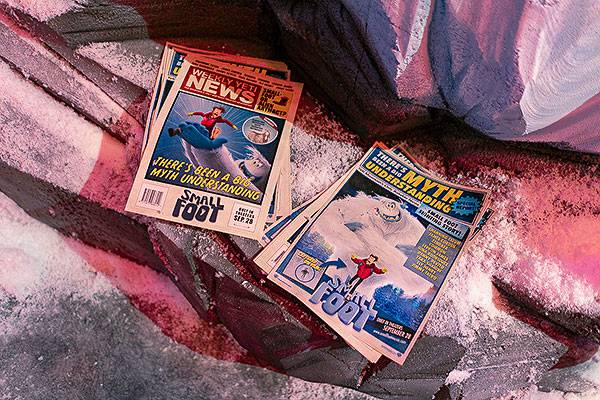
The Experiential Supply Co. Talks About its Smallfoot Village Installation to Promote Warner Bros’ Animated Film, Smallfoot
The latest evolution of experiential marketing was exemplified in Smallfoot Village, a large-scale, pop-up installation constructed to advertise the Warner Bros’ movie Smallfoot, which opened on September 28, 2018. The installation was open for 35 days at the corner of Hollywood and Vine in Hollywood, California. This free event allowed visitors to enter the world of the feature film via a 40-minute, immersive journey through a two-level Yeti village. Part of the village was up above the clouds, and guests could roam the clouds, enter a snow room, and move through other environments found in the movie. They then descended through the clouds on a slide into the Smallfoot town, where they could sing karaoke in a tavern, create art in the Yeti Museum, and play in the Yeti or Not Arcade. The Experiential Supply Co. was hired to recreate the film in 3D.The Challenge
The challenge for the Smallfoot Village project was to recreate the extremely rich, visual, dynamic scenes within the film and bring them to life in the real world. The Experiential Supply Co. specializes in large-scale, immersive experiences which are micro versions of theme parks, as Jasen explained it. The company is mainly involved with the Hollywood movie industry and has had the opportunity to work with a variety of different properties, translating them from the big screen into the real world. The idea is for fans to get closer to the film by interacting directly with the characters and storylines and, also, to take photos and share their experience with friends, family, and their digital community. The Experiential Supply Co. was approached by Warner Bros. to create an installation to market its soon-to-be-released animated film, Smallfoot. The movie features the voices of James Corden, LeBron James, Zendaya, Common, Danny DeVito, and Gina Rodriguez, among others. “The Warner’s Animation Group was trying to build something with Smallfoot and its characters that extended beyond the screen and into merchandise, sponsorship, and different partnerships,” explained Jasen.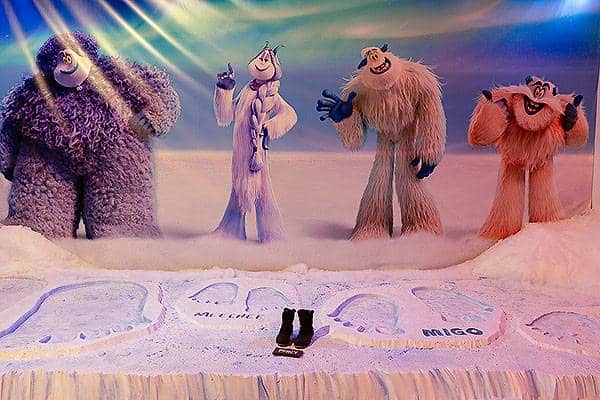
The World of Smallfoot
The premise of Smallfoot: Yetis live above the clouds, and humans (Smallfoots) live below the clouds. There are these two, parallel, separate worlds, and the Yetis and Smallfoots are afraid of one another, even though they’ve never interacted. There have been myths and occasional sightings of Yetis by humans and vice versa, but, of course, neither knows anything about the other. The Yetis bring Percy (the main human character played by James Corden) up to the Yeti village to show him off, much as we’d expect us humans to do if we ever captured a Yeti. Through the story, it’s revealed that the Yetis aren’t monsters, and the two groups become friends. “What was cool about this project was everything from the film was big and cold and beautiful with all these iridescent colors,” said Jasen. Experiential Supply Co. was tasked with bringing both the Yeti and the human worlds to life. They came up with the idea to build a 12,500-square-foot, two-story, climate-controlled structure in Hollywood at the corner of Hollywood Boulevard and Vine Street. From the moment fans walked in, they were immediately in the story of Smallfoot. The temperature in the structure was kept at about 60 degrees at all times, so, on a 90-degree day in Los Angeles, this, in itself, got guests’ attention. Guests were transported above the clouds into the Yeti’s world by first going through an entryway within glowing, fabricated clouds that radiated beautiful colors and then ascending to the Yeti village. There were a half-dozen photo stations scattered among the Cloud Room, the Snow Room, and in front of Yeti Square. There were two, 14-foot-high rock sculptures with mushroom tops that spun different cables and cords that, in the film, helped the Yetis operate in their world. Guests were then transported back down below the clouds. In the film, a character named Migo takes an epic spill when he falls from the top of the mountain. This was replicated in a fun way with a 20-foot-long, enclosed, spiral slide for kids could enjoy. There were three loops and then the kids were deposited into the Smallfoot town. The Smallfoot town was a series of six huts containing various interactive elements from karaoke to arts and crafts to the “Down-a-Yeti.” The village was an immersive environment which stayed true to the film. “Snow” fell every five minutes or so on demand to enhance the wintery environment.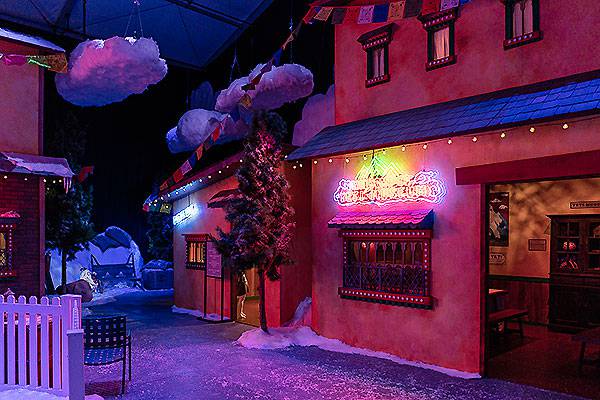
Smallfoot as an Example of the Evolution of Experiential Marketing
Kelsey explained, “I think people enjoy getting out of that digital world a little bit and actually ‘feeling it,’ in every sense of that phrase. Over the past two years, I’ve seen experiential becoming something that people are budgeting for as a part of their yearly marketing budget from the outset. Companies are saying, ‘This is something we need to be doing. We’re behind.’ Europe is proving it. They’ve been doing this for 10 years and showing that it’s successful, and it’s not going away. Three years ago, when we talked to people about this, the response was often, ‘I’d love to have that if I had a movie studio budget.’ That’s not the conversation anymore. Now it’s, ‘I have X amount of money for TV, X for radio, and X for experiential, and we need your help to help us stay relevant as a brand.’” As brand experiences become more numerous and expansive, the lines between a marketing campaign and an attraction will continue to blur. Many physical experiences—and Smallfoot is a perfect example—are already close to being indistinguishable from themed entertainment. With most themed entertainment, there’s a creative team that dreams up experiences. Sometimes these ideas work, and sometimes they don’t. The Experiential Supply Co. is on the flip side in that a brand comes to them wanting to create an experience or install because it’s in line with their IP. It’s objective-driven from the beginning.Working with The Experiential Supply Company—the Process
If a marketer is considering working with The Experiential Supply Co. and has never done experiential before, Kelsey says their team begins with education. “We ask them if what they have in mind makes sense for them and their brand. We want to make sure people spend smart and will make the impact they have in mind,” she explained. “Say a studio comes to us and wants us to create an install for the movie Mission Impossible. All we’ve seen is the same trailer for the film that everybody sees. That’s the only material we have to work with. So, first, we focus on budget parameters, timing, and general things like that. We roll with brainstorming and throwing ideas at the wall to see what resonates with the client based on the goals they have. It’s a pretty collaborative process because we aren’t only working with the studio marketing team. Each film has its internal team—directors, producers, etc. We may start with 30 ideas, and then, over the course of a couple weeks or months—depending on the timeline of the project—we narrow it down to three. We go into greater depth on what the experiences could look like, cost, user journeys, things like that. Once the final idea is given the green light, it’s a sprint from there to execution.” Experiential Supply Co. has a core team but hires out as needed for its projects. The company’s employees work on everything and, depending on the project and the concept, specialized people, are brought in. Some of these people have been working with Experiential Supply for years, so the company knows whom to bring in for a build or a piece of technology it hasn’t done before.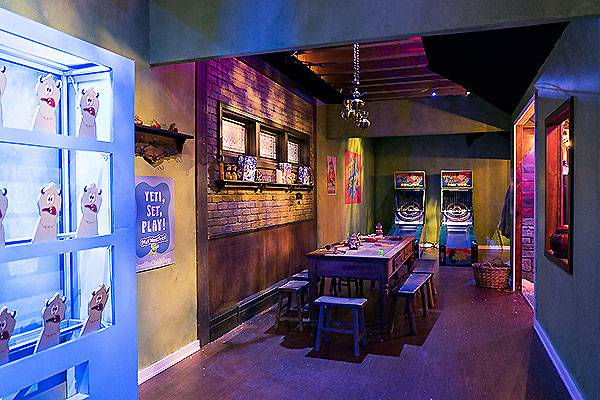
Is It Themed Entertainment or Is It Marketing?
When does a marketing campaign become themed entertainment, and can something be both? “The end use of these experiences we’re ideating around and helping bring to life is, of course, as marketing tools,” said Jasen, “but I wouldn’t classify us as a marketing company. We’re bringing these experiences to life on behalf of a marketing department, and they’re the driving force behind them. We’re just a tool in the toolbox for them to pick up and use in their efforts. We’re their execution and production arm.”Measurement Metrics
What do the marketing teams of these companies use as metrics to determine the success of an Experiential Supply Co. creation, and what does Experiential Supply use as metrics? Jasen stated that the most important thing for his company—from the conception phase all the way to the moment the event opens—is the throughput number. The company’s goal is to create an experience that assures guests will want to spend more than five minutes being a part of. The challenge is balancing people wanting to spend time in the experience and moving them through in a timely fashion, said Jasen. The secondary metric is how the film performs. Experiential Supply Co. is a piece of a larger marketing campaign, explained Kelsey, and its job is to build awareness. Throughput is a metric, but so are the digital conversations people have about being in these beautiful, immersive places where they can take and share pictures and tell their friends about it. Even though the Smallfoot Village was in LA, influencers are everywhere, Kelsey pointed out. She emphasized that there the usual marketing analytics aren’t used to determine the success of the promotional event. That’s determined solely by how the film does.
The Experiential Marketing Lifecycle
It seems clear that Smallfoot Village would be considered themed entertainment, because it’s a themed environment created for entertainment purposes that conveys a story. “There’s definitely overlap, because there’s a common goal at the core of each one,” said Kelsey. “We’re not building a long-term event, but we want to create that same feeling and effect among users in a property or an IP or a product launch that will only last a day, a week, or a month. The challenge is building something that only needs to last from a day or a month rather than 10 years-plus. It’s a different world—quick, fast-paced, and nimble.” Experiential Supply has mastered being able to expand these experiences to run longer so more people can attend without doubling the cost to the client, and they’ve gotten very creative in how they do that, she said. “Especially with a film like Smallfoot, the huge positive is that, the longer it’s up, the more time we’re able to build that equity in the film by engaging with thousands of people each day it’s open,” said Jasen. “The crowd we saw on day one versus the crowd on day 35 were completely different. The reaction was way more positive at day 35, because we were building that narrative, building up that IP, and telling that story to more and more people who were building the social media and digital conversation. It’s like adding oil to the engine the studio puts out. It’s all part of that toolbox.” Of course, the longer the installation is open, the more people have an opportunity to tell their friends—who maybe hadn’t heard of the installation or the film—about it. On the last weekend that Smallfoot was open, there was a four-hour line, which was multiple times longer than the line on the first weekend.
The Wrap Up: Will lines continue to blur?
The case study confirms that the boundary between what some of these traditional entertainment companies are doing and what brands are doing is getting blurrier. As an example, Comcast needed to help raise awareness for Walking Dead, so they created physical brand experiences for the series that they nested inside Universal’s Halloween Horror Nights. In the same way, Warner Bros. wanted to raise awareness for Smallfoot, so they set up a marketing experience that was, for all intents and purposes, the same. From a guest perspective, going through the Smallfoot experience is similar to going to a theme park or Horror Nights or some other temporary install experience where there are IPs in use. The Smallfoot Village experience was so complete in its theme and so good in its execution that it could be included among attractions created purely to be a business profit center. The Experiential Supply Co. views itself as an extension of a marketing tool kit that isn’t restricted by having to make money, so it can make an experience for the sake of the experience and know it will help the overall merchandising and sales of this other product. There are different rules that this company is playing by. In addition, guests might have enjoyed Smallfoot Village more than some of these other events because there was no cost of admission. The result was as impactful as these events that are focused on profit, but it’s an entirely different game.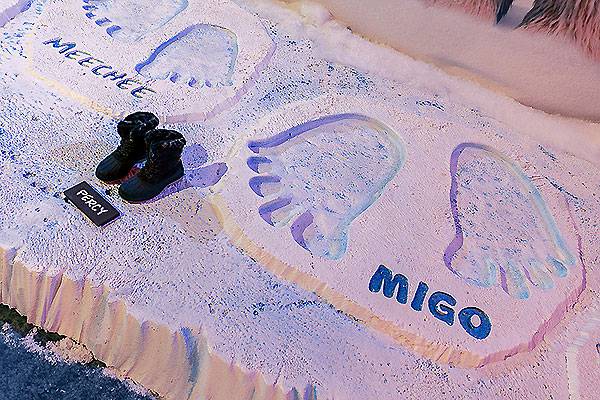
Key Takeaways:
- Experiential marketing is fast becoming a tool that marketers use to bring attention to and promote events and products.
- Experiential marketing often manifests as short-lived, pop-up events or performances, but these are evolving to become full-on immersive experiences that sometimes last weeks. As such, they’re starting to blur the line between marketing events, seasonal events, and themed entertainment.
- Experiential marketing poses some competitive issues for seasonal events and themed entertainment, because such events don’t have to meet the same cost objectives, and they often hire from the same sources as seasonal events and theme parks.
- Smallfoot Village was a large-scale, pop-up installation constructed to advertise the Warner Bros’ movie Smallfoot, which opened on September 28, 2018.
- The challenge for the Smallfoot Village project was to recreate the extremely rich, visual, dynamic scenes within the film and bring both the Yeti and the human worlds to life. We came up with the idea to build this 12,500-square-foot, two-story, climate-controlled structure in Hollywood at the corner of Hollywood Boulevard and Vine Street.
- Over the past two years, experiential marketing has become something companies are budgeting for as a part of their yearly marketing budget from the outset. Companies are saying, ‘This is something we need to be doing. We’re behind.’ Europe is proving it. They’ve been doing this for 10 years and showing that it’s successful, and it’s not going away.
- “We’re bringing these experiences to life on behalf of a marketing department, and they’re the driving force behind them.”
- Experiential Supply Co. is a piece of a larger marketing campaign, and its job is to build awareness. Throughput is a metric, but so are the digital conversations people have about being in these beautiful, immersive places where they can take and share pictures and tell their friends about it.
- “There’s definitely overlap between brand experiences and themed entertainment because there’s a common goal at the core of each one.”
- From a guest perspective, going through the Smallfoot experience was similar to going to a theme park or Halloween Horror Nights or some other temporary install experience where there are IPs in use.
- The Experiential Supply Co. views itself as an extension of a marketing tool kit that isn’t restricted by having to make money, so it can make an experience for the sake of the experience and know it will help the overall merchandising and sales of this other product.
Philip Hernandez
Philip Hernandez is a freelance writer, speaker, producer, and marketer specializing in Seasonal Attractions.
In 2018, Philip became the CEO at Gantom Lighting & Controls, a manufacturer of the world’s smallest DMX LED lighting. Gantom is used in every major theme park worldwide to illuminate where other fixtures cannot.
Since 2014 Philip has published Seasonal Entertainment Source magazine (SES), a quarterly print publication for the seasonal attraction professional. SES ships to readers in over 18 countries.
Philip operates the Haunted Attraction Network (HAN), the largest global media entity for the haunted attraction industry. HAN includes written content, videos, a series of podcasts, and the Haunt Design Kit brand.
Philip produces the Leadership Symposium for Seasonal Attractions, a masterclass series for seasonal attraction professionals. Watch more here.
Philip co-hosts the ‘Marketing your Attraction’ podcast monthly. Listen here.
Contact Philip for projects here: [email protected]
